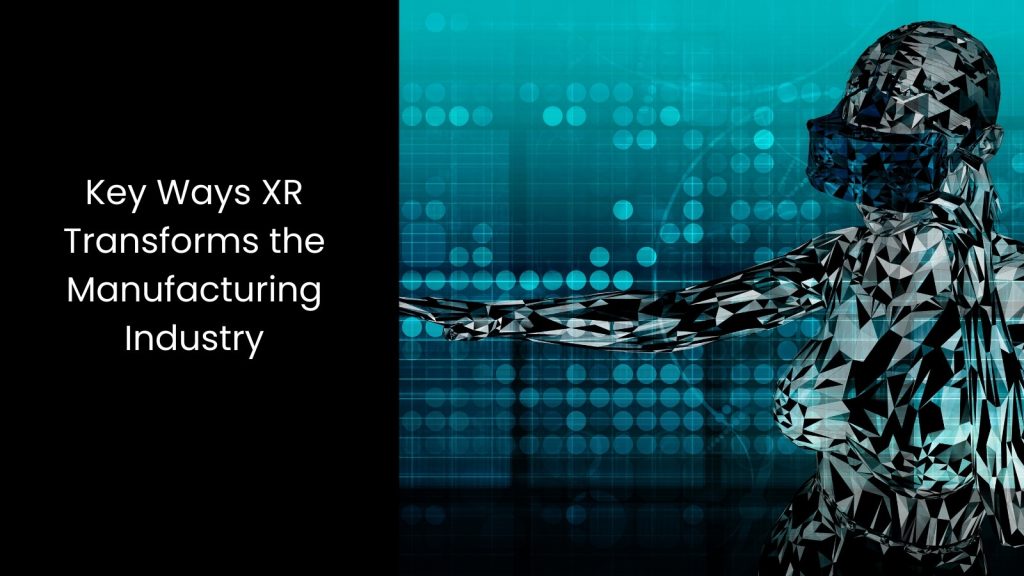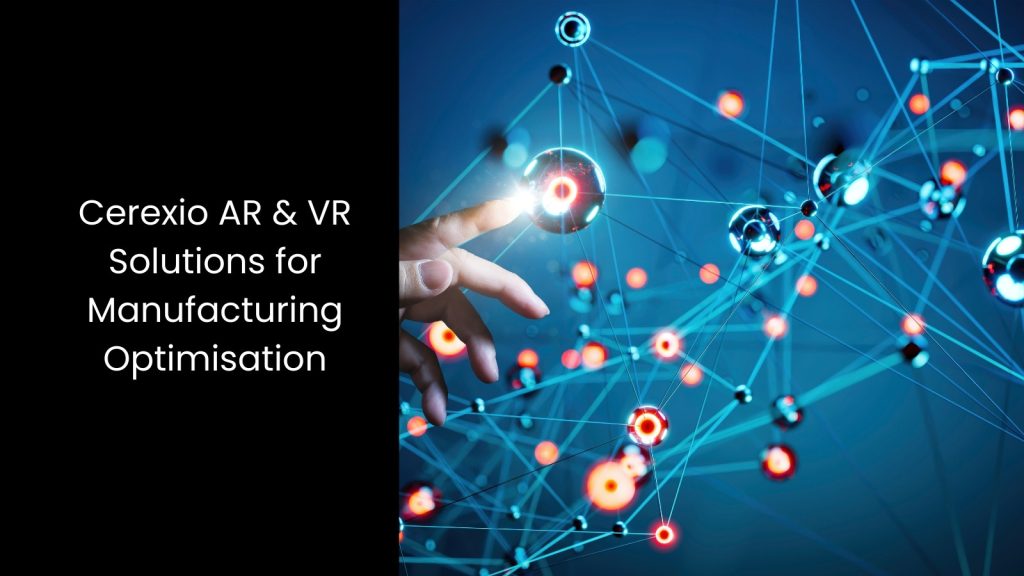The manufacturing sector is known as the pioneer of industrial progress, considering its global impact. The Singaporean manufacturing realm is no exception, for sure. However, with the dynamics of the industry and the new technological and business evolutions, this particular sector is on the cusp of a revolution. Extended reality, also known as XR, enters the manufacturing scenario as one of the best weapons to fight battles against timely challenges. It is rapidly transforming how we design, develop, and assemble products.
This article covers everything about Extended Reality and how its transformative potential helps the manufacturing industry flourish in today’s world.
This article covers everything about Extended Reality and how its transformative potential helps the manufacturing industry flourish in today’s world.
Understanding Extended Reality

What exactly is this?
You may have heard of Augmented Reality (AR) and Virtual Reality (VR). Are these things the same as Extended Reality? It is time to do a deep dive into this topic.
You may have heard of Augmented Reality (AR) and Virtual Reality (VR). Are these things the same as Extended Reality? It is time to do a deep dive into this topic.
- Extended Reality is a broad term that includes AR, VR, and Mixed Reality (MR). So, no, these are not the same. Every technology has unique characteristics. XR combines the real and virtual worlds to create new experiences. AR adds digital elements to the real world using devices like smartphones or AR glasses. For example, you can see virtual furniture in your actual living room before buying it. VR creates a completely virtual environment, making you feel like you are in a different place.
- You use VR headsets to explore virtual worlds, play games, or practise real-life skills in a safe setting. MR blends real and virtual worlds, allowing you to interact with both.
- Its mechanism is not that complicated to understand. XR technology works through sensors, cameras, and advanced software. These devices track your movements and surroundings, adjusting the digital content you see accordingly.
- Companies are developing lightweight, immersive XR headsets to make these experiences more accessible. XR technology has come a long way and is eventually changing how we work, learn, and play by blending the digital and physical worlds, making tasks easier and more engaging.
Key Ways XR Transforms the Manufacturing Industry

Improving Quality Control
This technology can improve quality control in manufacturing so easily. It does this through its ability to enhance the precision and efficiency of inspections.
Using AR, inspectors can overlay digital information onto physical products, highlighting defects or inconsistencies that might be hard to see with the naked eye. For example, AR glasses can display exact measurements or compare real-time product data against digital blueprints. This will ensure each item meets strict specifications.
In another way, VR can simulate complex testing environments where inspectors practise identifying potential flaws without risking damage to actual products. This training boosts their skills and accuracy, leading to better real-world inspections. This is where MR allows inspectors to interact with digital twins, exact virtual replicas of physical products, enabling thorough examinations from all angles without physically handling the item.
This fusion of methods helps detect hidden defects that might go unnoticed in a traditional inspection. XR also enables real-time data sharing and collaboration among quality control teams. Manufacturers can instantly share their findings with remote experts, who can provide immediate feedback and guidance, speeding up the decision-making process.
It is a unique feature of XR systems that they can record and analyse inspection data, identifying patterns or recurring issues. This data-driven approach helps manufacturers pinpoint the root causes of defects and implement corrective actions more effectively. As it allows integrating XR technology into quality control processes, manufacturers can ensure higher product quality, reduce waste, and enhance customer satisfaction.
Using AR, inspectors can overlay digital information onto physical products, highlighting defects or inconsistencies that might be hard to see with the naked eye. For example, AR glasses can display exact measurements or compare real-time product data against digital blueprints. This will ensure each item meets strict specifications.
In another way, VR can simulate complex testing environments where inspectors practise identifying potential flaws without risking damage to actual products. This training boosts their skills and accuracy, leading to better real-world inspections. This is where MR allows inspectors to interact with digital twins, exact virtual replicas of physical products, enabling thorough examinations from all angles without physically handling the item.
This fusion of methods helps detect hidden defects that might go unnoticed in a traditional inspection. XR also enables real-time data sharing and collaboration among quality control teams. Manufacturers can instantly share their findings with remote experts, who can provide immediate feedback and guidance, speeding up the decision-making process.
It is a unique feature of XR systems that they can record and analyse inspection data, identifying patterns or recurring issues. This data-driven approach helps manufacturers pinpoint the root causes of defects and implement corrective actions more effectively. As it allows integrating XR technology into quality control processes, manufacturers can ensure higher product quality, reduce waste, and enhance customer satisfaction.
Safety and Risk Management
With XR, companies can create realistic simulations of dangerous environments and scenarios without exposing workers to actual hazards. Let us take VR, for example. It can immerse employees in simulated emergencies, such as fires or chemical spills. Workers practise their responses in these simulations, learning how to handle crises safely and effectively. This training prepares them for real-life emergencies, reducing the risk of accidents and injuries.
AR also enhances safety by providing real-time information during maintenance and operations. Mixed Reality combines elements of both VR and AR, allowing workers to interact with digital models of machinery and systems. They can practise operating complex equipment in a virtual environment before handling the real thing, reducing the likelihood of errors that could cause accidents.
As you can see, by integrating XR technology into safety and risk management practices, manufacturers can create a safer working environment. XR training boosts workers’ skills and confidence, while real-time information and remote support help prevent accidents. This proactive execution ensures that employees are well-prepared and that risks are minimised, leading to a more secure and efficient manufacturing process.
AR also enhances safety by providing real-time information during maintenance and operations. Mixed Reality combines elements of both VR and AR, allowing workers to interact with digital models of machinery and systems. They can practise operating complex equipment in a virtual environment before handling the real thing, reducing the likelihood of errors that could cause accidents.
As you can see, by integrating XR technology into safety and risk management practices, manufacturers can create a safer working environment. XR training boosts workers’ skills and confidence, while real-time information and remote support help prevent accidents. This proactive execution ensures that employees are well-prepared and that risks are minimised, leading to a more secure and efficient manufacturing process.
Enhancing Design and Prototyping
Designing in manufacturing is challenging because it requires precision, creativity, and extensive testing. Designers must create products that meet strict standards while also being innovative and functional. Traditional prototyping is just a complex chain of scenarios that includes creating physical models, which is time-consuming and expensive.
If manufacturing mistakes or design changes occur, it means starting over, adding to the cost, and delaying production. Designers also face communication challenges when working with teams or clients, as conveying ideas and modifications accurately can be difficult.
The latter technology helps manufacturers enhance design and prototyping by making these processes faster, cheaper, and more efficient. With XR capabilities, designers can create and explore 3D models of their products in a virtual space. This immersive environment allows them to identify and fix issues early, reducing the need for physical prototypes. VR as a part of it also supports designers to test different variations and materials, ensuring the final product is optimal before any physical model is made.
It allows designers to overlay digital models onto real-world objects, providing a clear view of how a product will look and function in its intended environment.
Therefore, it is obvious that if they can integrate XR technology, manufacturers can streamline the design and prototyping processes. This will make it more efficient and cost-effective. This leads to better-designed products, quicker development times, and a smoother transition from concept to production.
If manufacturing mistakes or design changes occur, it means starting over, adding to the cost, and delaying production. Designers also face communication challenges when working with teams or clients, as conveying ideas and modifications accurately can be difficult.
The latter technology helps manufacturers enhance design and prototyping by making these processes faster, cheaper, and more efficient. With XR capabilities, designers can create and explore 3D models of their products in a virtual space. This immersive environment allows them to identify and fix issues early, reducing the need for physical prototypes. VR as a part of it also supports designers to test different variations and materials, ensuring the final product is optimal before any physical model is made.
It allows designers to overlay digital models onto real-world objects, providing a clear view of how a product will look and function in its intended environment.
Therefore, it is obvious that if they can integrate XR technology, manufacturers can streamline the design and prototyping processes. This will make it more efficient and cost-effective. This leads to better-designed products, quicker development times, and a smoother transition from concept to production.
Offering Training and Skill Development
If you are seeking a tool that helps offer better training and skill development, then XR is your final destination, as it can get this done by creating immersive and interactive learning experiences.
No need to rely on traditional training methods that involve lectures, manuals, and hands-on practice, which can be time-consuming and less effective. XR changes this by using VR, AR, and MR to make training more engaging and efficient.
This fusion provides a fully immersive environment where workers can practise their skills without any real-world risks. With this in hand, trainees can learn to operate complex machinery or handle hazardous materials in a virtual setting. This allows them to make mistakes and learn from them without any danger. Those simulations can replicate real-life scenarios, helping workers develop problem-solving skills and build confidence.
XR technology also supports remote training, enabling experts to guide workers from different locations. Trainers can observe and instruct trainees in real time, providing immediate feedback and support.
No need to rely on traditional training methods that involve lectures, manuals, and hands-on practice, which can be time-consuming and less effective. XR changes this by using VR, AR, and MR to make training more engaging and efficient.
This fusion provides a fully immersive environment where workers can practise their skills without any real-world risks. With this in hand, trainees can learn to operate complex machinery or handle hazardous materials in a virtual setting. This allows them to make mistakes and learn from them without any danger. Those simulations can replicate real-life scenarios, helping workers develop problem-solving skills and build confidence.
XR technology also supports remote training, enabling experts to guide workers from different locations. Trainers can observe and instruct trainees in real time, providing immediate feedback and support.
Cerexio AR & VR Solutions for Manufacturing Optimisation

Cerexio’s AR and VR capabilities enhance manufacturing operations with immersive, independent user experiences. Our advanced software suites offer interactive visualisation for agile, stress-free monitoring and decision-making. Cerexio extends a helping hand to any manufacturing domain to customise hi-tech solutions and experience the cutting-edge visualisation standards of Industry 4.0.
Revolutionising the Manufacturing Domain via Extended Reality

Gone are the days when you relied on old manual methods to look into your manufacturing processes and train your workforce. Now the time has come to revolutionise your operations with modern tools like Extended Reality. With the right strategies and technologies, your business journey will be unstoppable.
